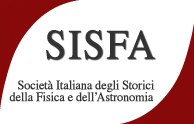Speaker
Description
The two-component theories of neutrino were developed in 1957, right after the discovery of parity violation in weak interactions, which had taken place the previous year thanks to the theoretical studies of Tsung-Dao Lee and Yang Chen-Ning. The choice of the plural in the word “theories” is due to the fact that, in that year, three papers - all containing the same theoretical idea - were published. Although this theory found fertile ground only in that moment, it was actually rooted in the 1929 work of Hermann Weyl, who, in an attempt to get rid of the negative-energy solutions to the Dirac equation, had coined the term “Zweikomponententheorie”. However, Weyl’s suggestion was not the only road leading to a two-component approach. Another attempt in this direction, although driven by different motivations, was made in 1937 by Ettore Majorana, who also shared the will to drop the negative-energy solutions. This would have allowed him to construct a theory of neutral particles, such as neutrinos, that could be equivalent to their own antiparticles. Therefore, Majorana came up with another type of two-component theory. Even though Lee & Yang’s theory was based on Weyl’s reformulation of the Dirac’s equation, Majorana also played a role in there, because not the whole physics community was ready to accept an interpretation of neutrinos as “Dirac particles”. Therefore, some physicists started to describe how the two-component theory of neutrino and Majorana’s theory could be reformulated so to be equivalent for the free-particle, massless case.
In this contribution, I will reconstruct a version of this story that differs from the traditionally accepted one, because it sacrifices the “pedagogical” simplified linearity of textbooks for a more complex approach, that takes into account different perspectives.
Bibliography
“Pauli-Fierz correspondence”, Pauli Archives, CERN;
Unpublished interviews with C.N.Yang (credit Jinyan Liu).

